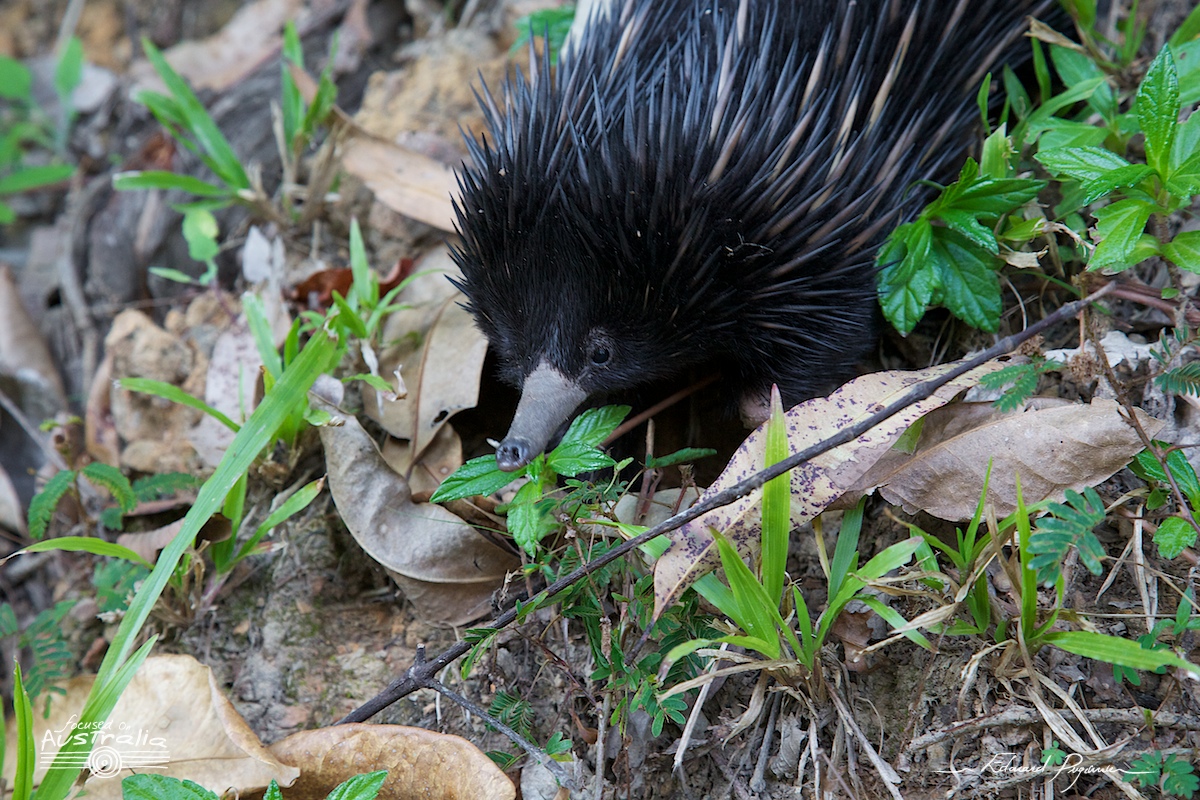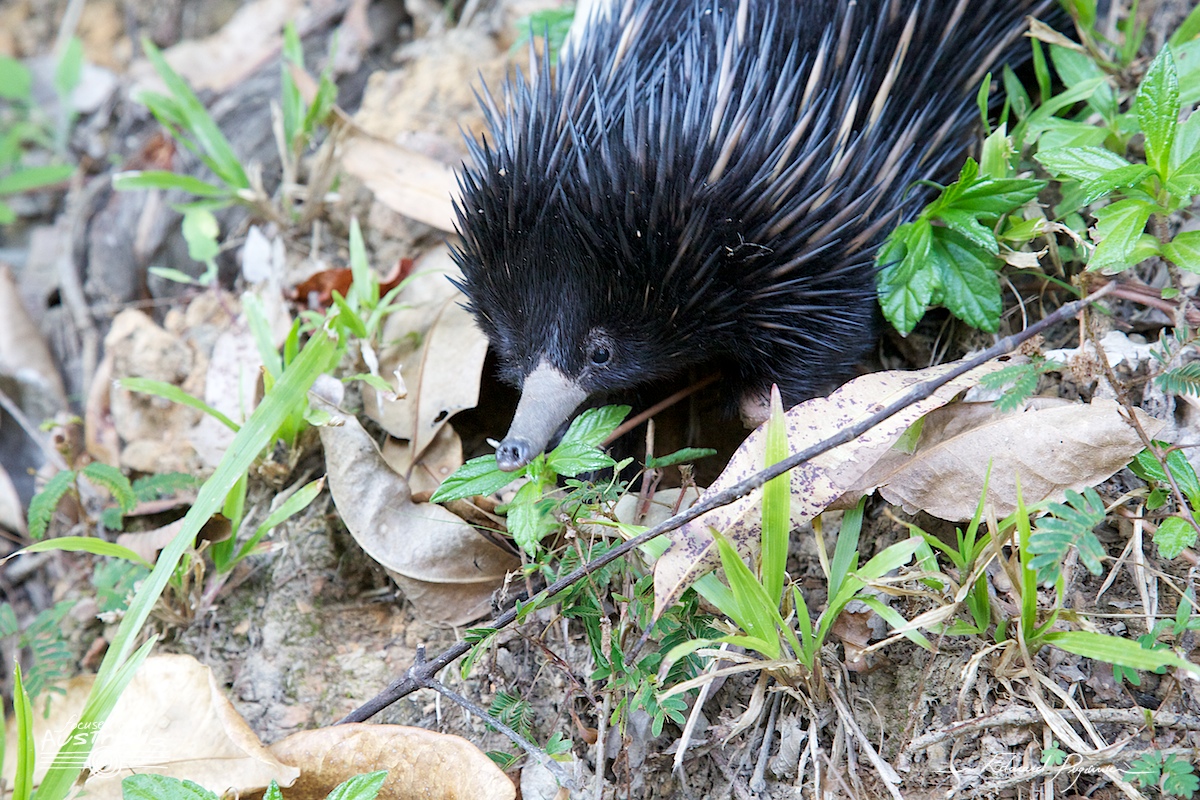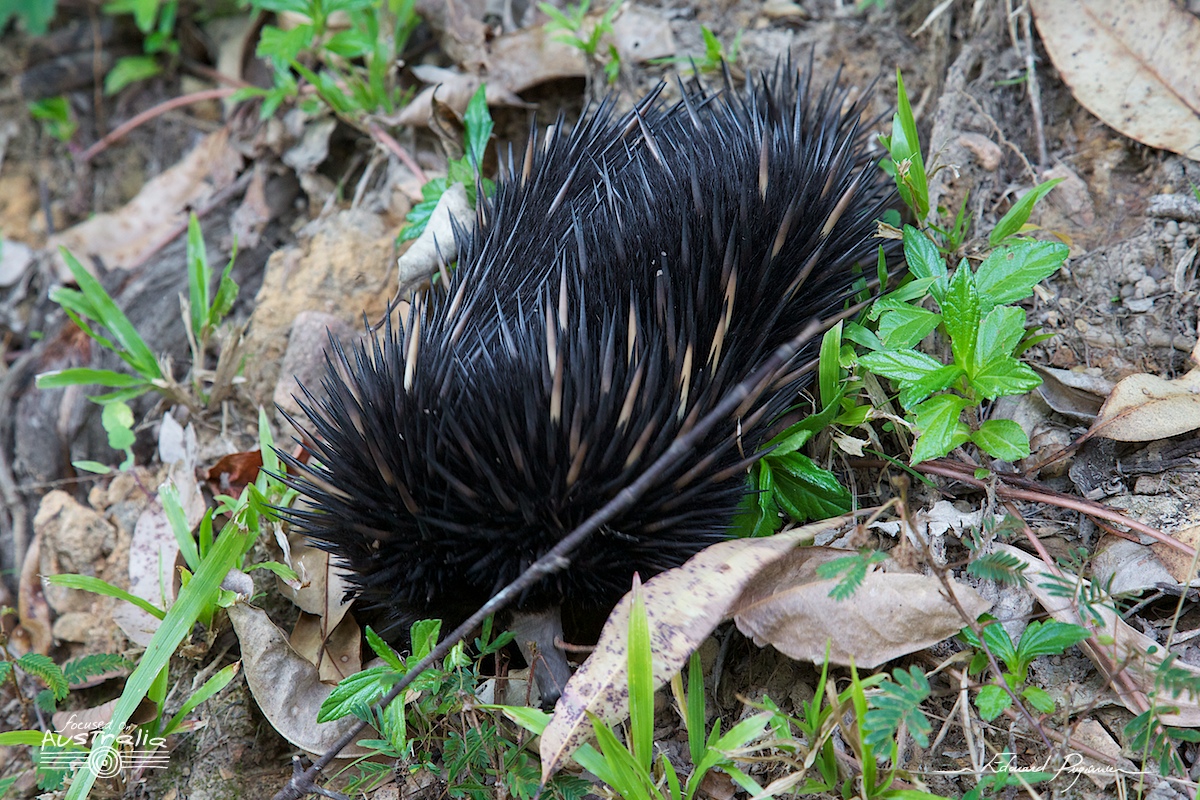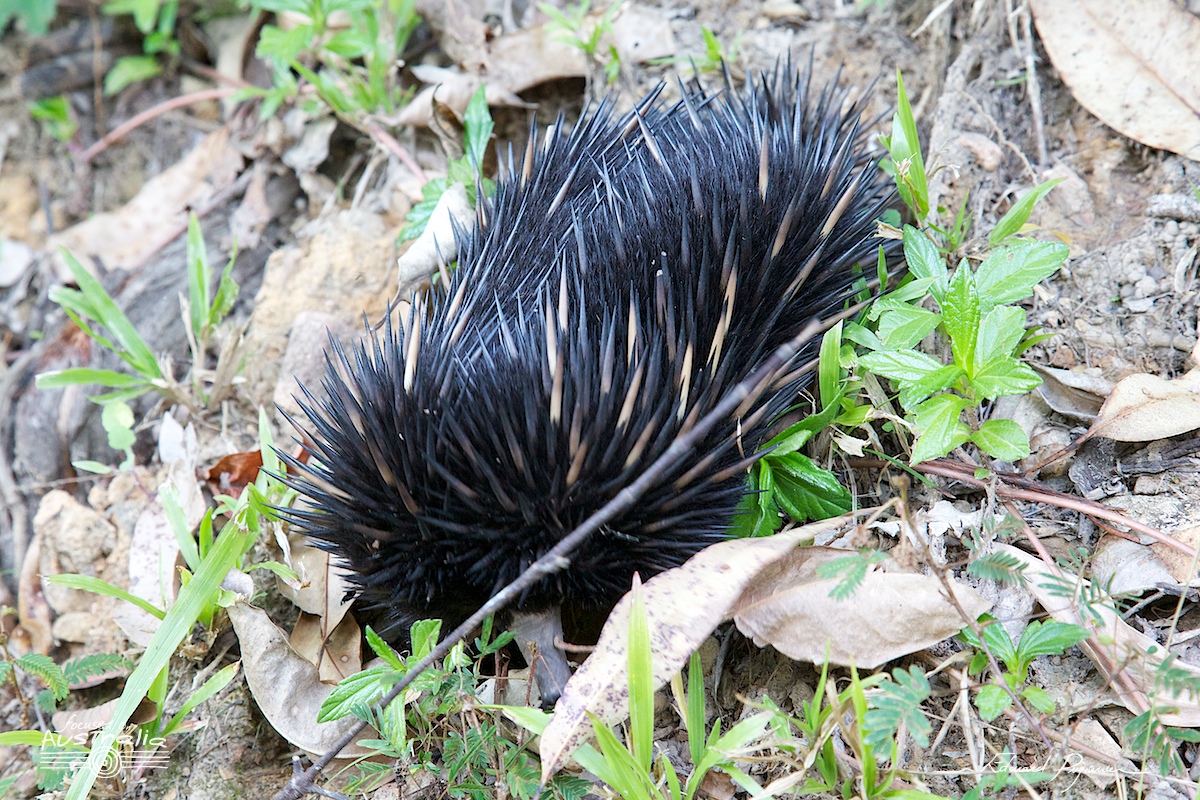We made as soon as possible to avoid further disrupting this little guy (although he did not seem to care about us). So the photos (and video) are bad, but it will give you an idea. As for the scale, it should be within 25-30 cm long. We met it as we walked along the road, we were comforted to see it climbing the ditch to reach the forest rather than attempt a crossing of the road (perhaps he had just done… :/).The short-beaked echidna (Tachyglossus aculeatus), also known as the spiny anteater because of its diet of ants and termites, is one of four living species of echidna and the only member of the genus Tachyglossus. The short-beaked echidna is covered in fur and spines, and has a distinctive snout and a specialized tongue, which it uses to catch its prey at a great speed. Like the other extant monotremes, the short-beaked echidna lays eggs; the monotremes are the only group of mammals to do so.
This echidna has extremely strong front limbs and claws due to its mechanical advantage, which allows it to burrow quickly with great power. As it needs to be able to survive underground, it has a great tolerance to high levels of carbon dioxide and a lack of oxygen. It has no weapons or fighting ability, and repels predators by curling into a ball and deterring opponent with its spines. The echidna lacks the ability to sweat and cannot deal with heat well, so it tends to avoid daytime activity in hot weather; it can swim if needed. The snout has mechanical and electroreceptors that help it to detect what is around it.
During the winter, it goes into deep torpor and hibernation to save energy and reduce metabolism, before emerging, as the temperature increases, to breed. Female echidnas only lay one egg a year, and the mating period is the only time the otherwise solitary animals meet one another; the male has no further contact with the female after mating. After the young are born, they are only the size of a grape, but grow rapidly on the mothers' milk, which is very rich in nutrients. After a period, they are too large and spiky to stay in the pouch, and after around six months they leave the burrow and have no more contact with their mothers.
The species is found throughout Australia, where it is the most widespread native mammal, and in coastal and highland regions of southwestern New Guinea, where it is known as the mungwe in the Daribi and Chimbu languages. It is not threatened with extinction, but human activities, such as hunting, habitat destruction, and the introduction of foreign predatory species and parasites, have reduced the distribution of the short-beaked echidna in Australia. Attempts to breed the echidna in captivity have not been successful to date, with none reaching maturity. However, as the echidna can survive merely by foraging dead logs for ants and termites, it can survive in environments with restricted resources.
Video extract:
Find the complete track on



